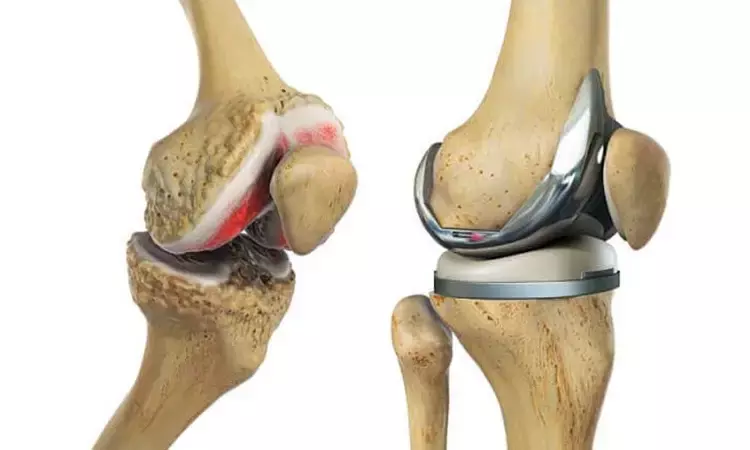- Home
- Medical news & Guidelines
- Anesthesiology
- Cardiology and CTVS
- Critical Care
- Dentistry
- Dermatology
- Diabetes and Endocrinology
- ENT
- Gastroenterology
- Medicine
- Nephrology
- Neurology
- Obstretics-Gynaecology
- Oncology
- Ophthalmology
- Orthopaedics
- Pediatrics-Neonatology
- Psychiatry
- Pulmonology
- Radiology
- Surgery
- Urology
- Laboratory Medicine
- Diet
- Nursing
- Paramedical
- Physiotherapy
- Health news
- Fact Check
- Bone Health Fact Check
- Brain Health Fact Check
- Cancer Related Fact Check
- Child Care Fact Check
- Dental and oral health fact check
- Diabetes and metabolic health fact check
- Diet and Nutrition Fact Check
- Eye and ENT Care Fact Check
- Fitness fact check
- Gut health fact check
- Heart health fact check
- Kidney health fact check
- Medical education fact check
- Men's health fact check
- Respiratory fact check
- Skin and hair care fact check
- Vaccine and Immunization fact check
- Women's health fact check
- AYUSH
- State News
- Andaman and Nicobar Islands
- Andhra Pradesh
- Arunachal Pradesh
- Assam
- Bihar
- Chandigarh
- Chattisgarh
- Dadra and Nagar Haveli
- Daman and Diu
- Delhi
- Goa
- Gujarat
- Haryana
- Himachal Pradesh
- Jammu & Kashmir
- Jharkhand
- Karnataka
- Kerala
- Ladakh
- Lakshadweep
- Madhya Pradesh
- Maharashtra
- Manipur
- Meghalaya
- Mizoram
- Nagaland
- Odisha
- Puducherry
- Punjab
- Rajasthan
- Sikkim
- Tamil Nadu
- Telangana
- Tripura
- Uttar Pradesh
- Uttrakhand
- West Bengal
- Medical Education
- Industry
New Flip autograft technique may address anterolateral Femoral Deficiency in TKA

M.J. Dietz et al presented a technique in which a patient's host bone from the standard distal femoral cuts was used to augment anterolateral bone loss of femur and provide a stable base for cementing of final femoral implants. Currently, the patient has 3-year follow-up with excellent results in terms of pain control with no evidence of component failure on the most recent radiographs. This technique has been published in " arthroplasty today " journal.
Anterolateral bone loss of the femur within the trochlear groove presents a unique and rare issue in primary total knee arthroplasty (TKA). Unlike distal and posterior femur bone loss for which most contemporary TKA systems have modular augments, the same does not exist for anterolateral bone loss.
When a primary TKA is recommended for patients suffering loss of anterior femoral bone, a flip autograft technique can be applied by which an autograft from the distal femur is utilized to provide a base to cement the final femoral implants. In addition to utilization for anterior femoral bone loss, this technique can be used to address a valgus deformity as well.
The authors performed a standard medial parapatellar approach in a patient with a valgus deformity, tri-compartmental degenerative arthritis with complete joint space narrowing, subchondral sclerosis, osteophytes, and an atrophic patella with chronic changes to the anterior femoral trochlea. After insertion of the femoral intramedullary cutting guide, the decision can be made to take an additional cut from the distal femur to account for flexion contracture, if warranted. Proximal tibial resection can then be completed. Due to anterolateral femoral deficiency, the subsequent femoral sizing and resection are planned using the anteromedial femoral surface, and the femoral cuts are completed using an anterior referencing cutting block.
The tibial and femoral components are then trialed; the femoral component may be found to be unstable due to the deficient anterolateral cortex. A graft can be fashioned from the resected distal femoral bone. The graft was denuded of any residual cartilage, and a rongeur and curette were used to prepare the anterior surface of the femur; an additional option would be to consider drill holes to encourage bone healing. Once sized and prepared, the graft was secured with 2 4.0-mm fully threaded cancellous screws that are countersunk below the surface. The lateral aspect can then be leveled to the previously cut surfaces of the distal femur (anterior and anterior chamfer). The femoral component should be trialed again, and once it is stable, the final components can subsequently be cemented in place. The decision to utilize a stem is only necessary if the surgeon is concerned about the overall bone quality of the distal femur. If resurfacing of the patella is possible, this should be completed.Standard wound closure should be performed following the procedure.
At the 3- year follow-up the bone graft incorpaoration was good. The authors opined that - this technique is a simple yet elegant solution to this rare condition with good results in this case.
Further reading:
Flip Autograft Technique for Anterolateral Femoral Deficiency in Total Knee Arthroplasty
Matthew J. Dietz, Patrick H. Gilligan, Ankur Makani, Anthony S. Machi.
Arthroplasty Today 15 (2022) 29-33
https://doi.org/10.1016/j.artd.2022.02.001
MBBS, Dip. Ortho, DNB ortho, MNAMS
Dr Supreeth D R (MBBS, Dip. Ortho, DNB ortho, MNAMS) is a practicing orthopedician with interest in medical research and publishing articles. He completed MBBS from mysore medical college, dip ortho from Trivandrum medical college and sec. DNB from Manipal Hospital, Bengaluru. He has expirence of 7years in the field of orthopedics. He has presented scientific papers & posters in various state, national and international conferences. His interest in writing articles lead the way to join medical dialogues. He can be contacted at editorial@medicaldialogues.in.
Dr Kamal Kant Kohli-MBBS, DTCD- a chest specialist with more than 30 years of practice and a flair for writing clinical articles, Dr Kamal Kant Kohli joined Medical Dialogues as a Chief Editor of Medical News. Besides writing articles, as an editor, he proofreads and verifies all the medical content published on Medical Dialogues including those coming from journals, studies,medical conferences,guidelines etc. Email: drkohli@medicaldialogues.in. Contact no. 011-43720751


